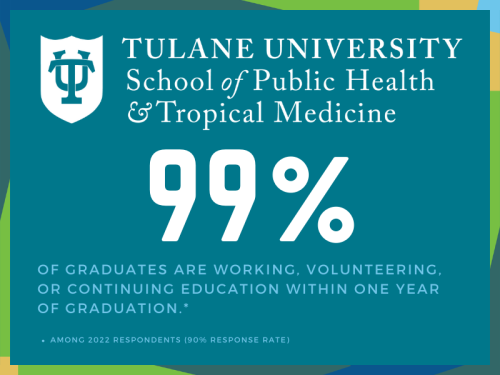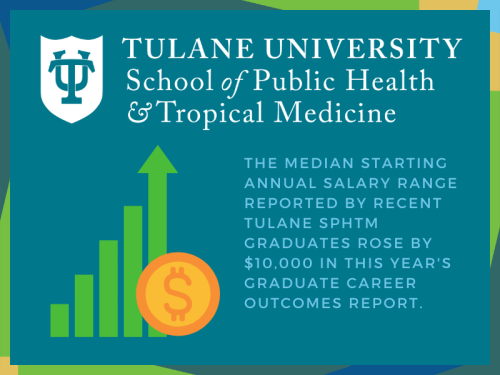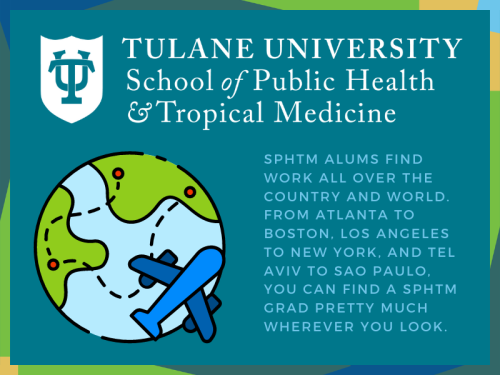Tulane SPHTM graduates find positive grad outcomes 99 percent of the time

Tulane School of Public Health and Tropical Medicine graduates continue to find work after graduation at a tremendous rate, as the most recent graduate career outcomes report has revealed.
99 percent of all graduates are working, volunteering, or continuing education within one year of graduation, according to the survey, which reached out to 454 students and saw a 90 percent response rate.
That figure represents the second straight year Tulane SPHTM graduates have found employment at a rate of 99 percent or better, and the third straight year over 96 percent.
The 2022 Graduate Career Outcomes Report, which includes the graduating classes of August 2021, December 2021, and May 2022, was composed of bachelor (39 percent), master (56 percent), and doctoral (5 percent) graduates.

The median starting annual salary range reported by recent graduates is $60,000 - $69,999, a rise from last year's figure of $50,000 - $59,000, even though salary data reported by graduates includes those that reported working as fellows or as full-time volunteers (i.e. Peace Corps), which typically offer a stipend and not a salary.
The most well-paid graduates in terms of starting salary were found among graduates of Environmental Health Sciences, Biostatistics and Data Science, and Tropical Medicine.

SPHTM alums continue to find work all over the country and world. The 10 most popular cities for employment after graduation included New Orleans, Atlanta, Boston, Chicago, Durham, N.C., Los Angeles, New York City, San Francisco, Seattle, and Washington D.C.
International landing spots included Tel Aviv, Isreal; Karachi, Pakistan; London; Nanaimo, Canada; Paris; Sakakah, Saudi Arabia; and Sao Paulo, Brazil.
The top employers of recent SPHTM graduates by sector included healthcare (26.8 percent), higher education (20.4 percent), non-profit (13.0 percent), government (11.7 percent), and management/consulting (8.4 percent).
Management/consulting made the top five employers list for the first time. Additional sectors included research, internet & software, pharmaceuticals, legal & law enforcement, and K-12 education, among others.
